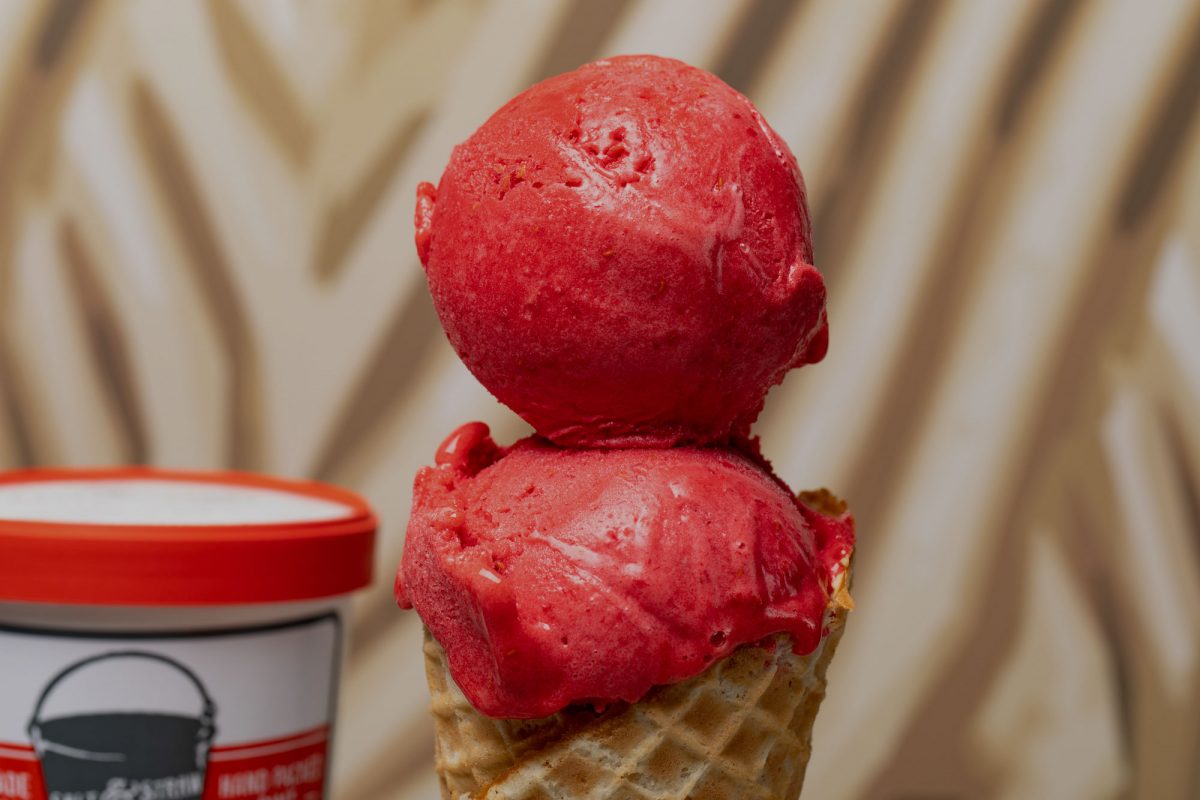Collab Lab: Woman-Run Oregon Coast Wasabi Spikes Our Raspberry Sorbet
When a friend gave Jennifer Bloeser a wasabi plant twenty years ago, she had no idea what it had in store for her.
But before she knew it, she was growing several plants at her home in Portland before deciding to devote her career to the shade plant. Now Bloeser runs Oregon Coast Wasabi, one of only four wasabi farms in the U.S.
[video width="960" height="1704" mp4="https://saltandstraw.com/wp-content/uploads/2019/07/final_5d2f87b3fdfa5300148fb60b_61700.mp4" poster="https://saltandstraw.com/wp-content/uploads/2019/07/Screen-Shot-2019-07-18-at-4.28.01-PM.png"][/video]
As Bloeser calls it, wasabi is a "quirky McQuirk plant". It has particular requirements: It thrives in cool, temperate climate (the more fog, the better); takes about 18 months to produce a substantial rhizome; needs great drainage; and the Japanese, who have historically grown the plant, aren't super forthcoming about how to do it successfully.
 Bloeser's farm has nine greenhouses across two acres ("because a little wasabi goes a long way!" she says); each grows wasabi at different stages. Bloeser and her farm manager, Jessica, harvest everything by hand—with a shovel. They dig up the wasabi and pull apart the various plant parts before giving the rhizome a traditional Japanese trim.
Bloeser's farm has nine greenhouses across two acres ("because a little wasabi goes a long way!" she says); each grows wasabi at different stages. Bloeser and her farm manager, Jessica, harvest everything by hand—with a shovel. They dig up the wasabi and pull apart the various plant parts before giving the rhizome a traditional Japanese trim.
 The fresh wasabi Bloeser grows doesn't taste anything like the glowing green glob you're used to seeing on your sushi tray (in fact, that's most likely dyed horseradish). The fresh stuff is kinda sweet and very floral, with a gentle spiciness. We love using it in berry sorbets. For this month's Oregon Wasabi Raspberry Sorbet, we zest a ton of wasabi and blend it up with slightly tart Oregon raspberries. The result is a slightly effervescent, clean, and refreshing sorbet.
The fresh wasabi Bloeser grows doesn't taste anything like the glowing green glob you're used to seeing on your sushi tray (in fact, that's most likely dyed horseradish). The fresh stuff is kinda sweet and very floral, with a gentle spiciness. We love using it in berry sorbets. For this month's Oregon Wasabi Raspberry Sorbet, we zest a ton of wasabi and blend it up with slightly tart Oregon raspberries. The result is a slightly effervescent, clean, and refreshing sorbet.

 Bloeser's farm has nine greenhouses across two acres ("because a little wasabi goes a long way!" she says); each grows wasabi at different stages. Bloeser and her farm manager, Jessica, harvest everything by hand—with a shovel. They dig up the wasabi and pull apart the various plant parts before giving the rhizome a traditional Japanese trim.
Bloeser's farm has nine greenhouses across two acres ("because a little wasabi goes a long way!" she says); each grows wasabi at different stages. Bloeser and her farm manager, Jessica, harvest everything by hand—with a shovel. They dig up the wasabi and pull apart the various plant parts before giving the rhizome a traditional Japanese trim.
 The fresh wasabi Bloeser grows doesn't taste anything like the glowing green glob you're used to seeing on your sushi tray (in fact, that's most likely dyed horseradish). The fresh stuff is kinda sweet and very floral, with a gentle spiciness. We love using it in berry sorbets. For this month's Oregon Wasabi Raspberry Sorbet, we zest a ton of wasabi and blend it up with slightly tart Oregon raspberries. The result is a slightly effervescent, clean, and refreshing sorbet.
The fresh wasabi Bloeser grows doesn't taste anything like the glowing green glob you're used to seeing on your sushi tray (in fact, that's most likely dyed horseradish). The fresh stuff is kinda sweet and very floral, with a gentle spiciness. We love using it in berry sorbets. For this month's Oregon Wasabi Raspberry Sorbet, we zest a ton of wasabi and blend it up with slightly tart Oregon raspberries. The result is a slightly effervescent, clean, and refreshing sorbet.

